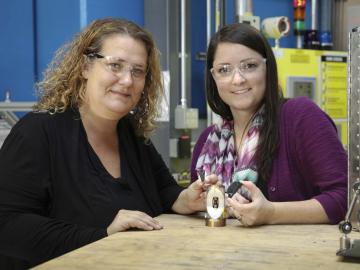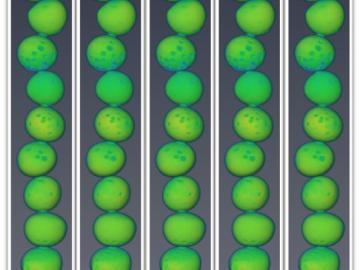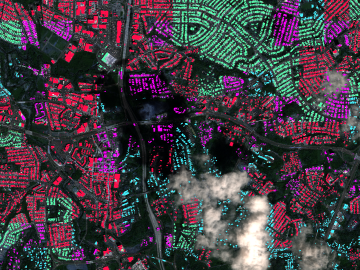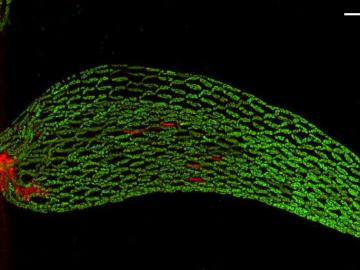
Filter News
Area of Research
- (-) Energy Science (38)
- (-) National Security (11)
- (-) Nuclear Science and Technology (6)
- (-) Quantum information Science (1)
- Advanced Manufacturing (1)
- Biology and Environment (37)
- Computational Engineering (2)
- Computer Science (6)
- Fusion and Fission (1)
- Isotopes (9)
- Materials (44)
- Materials for Computing (5)
- Mathematics (1)
- Neutron Science (64)
- Supercomputing (29)
News Type
News Topics
- (-) Artificial Intelligence (10)
- (-) Environment (30)
- (-) Isotopes (4)
- (-) Neutron Science (12)
- (-) Physics (4)
- 3-D Printing/Advanced Manufacturing (54)
- Advanced Reactors (9)
- Big Data (4)
- Bioenergy (17)
- Biology (8)
- Biomedical (6)
- Biotechnology (3)
- Buildings (21)
- Chemical Sciences (11)
- Clean Water (5)
- Composites (14)
- Computer Science (31)
- Coronavirus (7)
- Critical Materials (8)
- Cybersecurity (13)
- Energy Storage (47)
- Exascale Computing (2)
- Fossil Energy (1)
- Frontier (1)
- Fusion (4)
- Grid (26)
- High-Performance Computing (4)
- Hydropower (2)
- Machine Learning (9)
- Materials (29)
- Materials Science (22)
- Mathematics (1)
- Mercury (2)
- Microscopy (6)
- Molten Salt (4)
- Nanotechnology (6)
- National Security (12)
- Nuclear Energy (21)
- Partnerships (11)
- Polymers (10)
- Quantum Science (5)
- Security (7)
- Simulation (2)
- Space Exploration (5)
- Statistics (1)
- Summit (3)
- Transportation (45)
Media Contacts

Researchers at Oak Ridge National Laboratory developed a method that uses machine learning to predict seasonal fire risk in Africa, where half of the world’s wildfire-related carbon emissions originate.

Oak Ridge National Laboratory has licensed a novel method to 3D print components used in neutron instruments for scientific research to the ExOne Company, a leading maker of binder jet 3D printing technology.

Oak Ridge National Laboratory researchers have discovered a better way to separate actinium-227, a rare isotope essential for an FDA-approved cancer treatment.
An international team of scientists found that rules governing plant growth hold true even at the edges of the world in the Arctic tundra.

Oak Ridge National Laboratory researchers working on neutron imaging capabilities for nuclear materials have developed a process for seeing the inside of uranium particles – without cutting them open.
A team of scientists led by Oak Ridge National Laboratory found that while all regions of the country can expect an earlier start to the growing season as temperatures rise, the trend is likely to become more variable year-over-year in hotter regions.

A novel approach developed by scientists at ORNL can scan massive datasets of large-scale satellite images to more accurately map infrastructure – such as buildings and roads – in hours versus days.

An international team of scientists, led by the University of Manchester, has developed a metal-organic framework, or MOF, material

A team of scientists found that critical interactions between microbes and peat moss break down under warming temperatures, impacting moss health and ultimately carbon stored in soil.

Using the Titan supercomputer and the Spallation Neutron Source at the Department of Energy’s Oak Ridge National Laboratory, scientists have created the most accurate 3D model yet of an intrinsically disordered protein, revealing the ensemble of its atomic-level structures.


